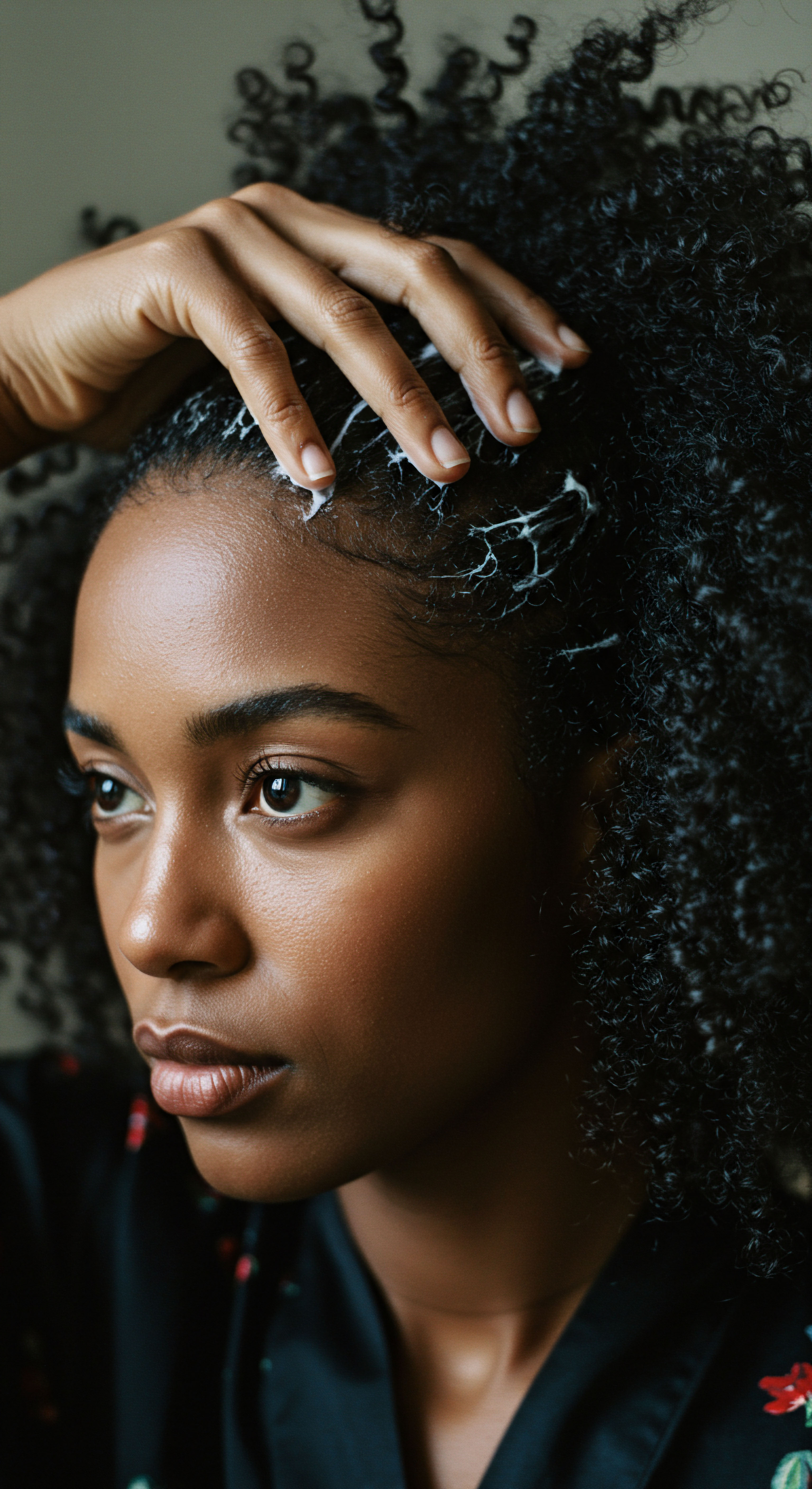
Roots
The whisper of textured hair against a pillow, the subtle shift in its feel with the changing air – these daily moments, often unnoticed in their quiet regularity, hold the secrets to minimizing friction and encouraging true vitality. To truly appreciate the path toward effortless hair days, we must first turn our gaze to the very foundations of textured hair itself. This means journeying into its unique biological design, its classifications, and the historical language that has shaped our understanding. Just as a seasoned gardener learns the soil before planting, so too do we seek to comprehend the inherent structure of textured hair before tending to its needs.

The Architecture of Textured Hair
Textured hair, particularly hair of African descent, possesses a distinct architecture that sets it apart. Unlike straight hair, which typically emerges from a round follicle, coily and curly strands originate from follicles that are more elliptical or hook-shaped. This follicular shape dictates the curl pattern, causing the hair shaft to bend and twist as it grows. The more pronounced the hook of the follicle, the tighter the curl pattern.
This inherent curvature means textured hair naturally presents more points of contact along its length when strands lie next to each other. This increased contact leads to a higher potential for mechanical friction compared to straighter hair types.
Consider the hair’s outermost layer, the Cuticle. This protective shield, composed of overlapping cells akin to roof shingles, lies flatter on straight hair. For textured hair, these cuticle scales tend to be more raised, particularly at the curves and bends of the strand. This raised nature, while natural, can make textured hair more susceptible to external forces.
When friction occurs, these already lifted cuticles can become further disturbed, leading to frizz, breakage, and split ends. A healthy cuticle, however, should appear smooth and reflect light well, able to withstand and limit friction between individual hair fibers.
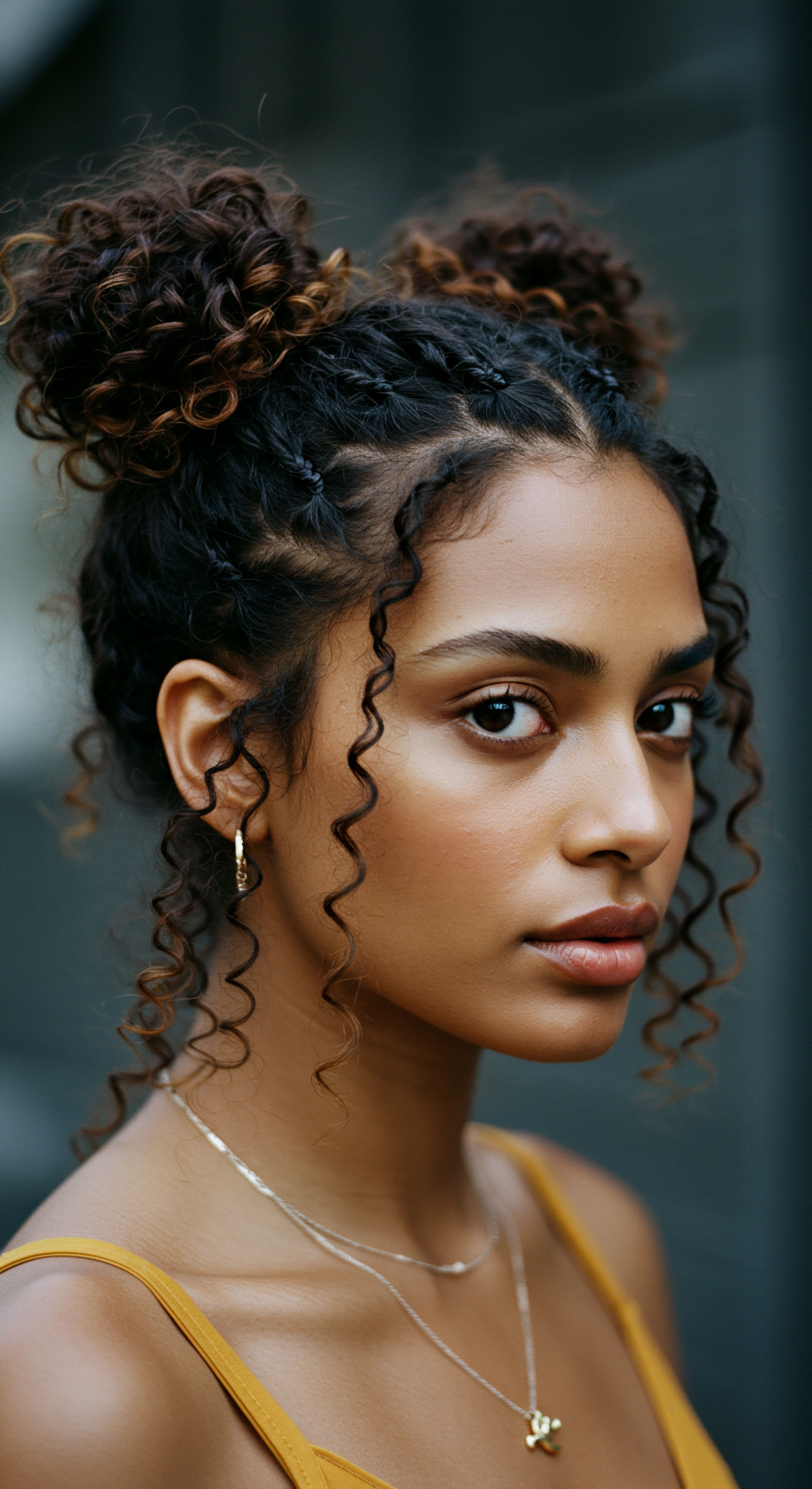
Why Hair Curvature Matters for Daily Care?
The unique curvature of textured hair also affects how natural oils, or sebum, travel down the hair shaft. Sebum, produced by scalp glands, serves as a natural conditioner, providing lubrication and protection. Due to the twists and turns of coily strands, sebum struggles to travel from the scalp to the ends, leaving textured hair prone to dryness.
This dryness, in turn, exacerbates the effects of friction, making strands more brittle and prone to damage. Understanding this fundamental biophysical property is the initial step toward crafting daily habits that prioritize gentle handling and moisture retention.
Textured hair’s unique structure, stemming from its elliptical follicle shape and raised cuticles, naturally invites more friction, underscoring the importance of mindful daily habits.
| Follicle Shape Round |
| Typical Hair Type Straight |
| Cuticle Characteristics Flatter, Tightly Laid |
| Follicle Shape Elliptical to Hook-Shaped |
| Typical Hair Type Wavy, Curly, Coily |
| Cuticle Characteristics More Raised, Especially at Bends |
| Follicle Shape Understanding follicle morphology provides insight into hair's inherent properties and care requirements. |

The Language of Textured Hair
Over generations, a lexicon has grown around textured hair, reflecting its varied forms and the experiences tied to it. Terms like “kinks,” “coils,” “waves,” and “curls” describe the spectrum of patterns. Beyond mere description, these words carry cultural weight, often intertwined with identity and societal perception. The act of naming and classifying helps individuals connect with their unique hair type, providing a starting point for tailored care.
For instance, the Andre Walker Hair Typing System, while sometimes debated, offers a framework for understanding curl patterns from straight (Type 1) to tightly coiled (Type 4). While no system perfectly captures the individuality of every head of hair, such classifications offer a common ground for discussion and product selection, guiding individuals toward routines that honor their hair’s inherent qualities.
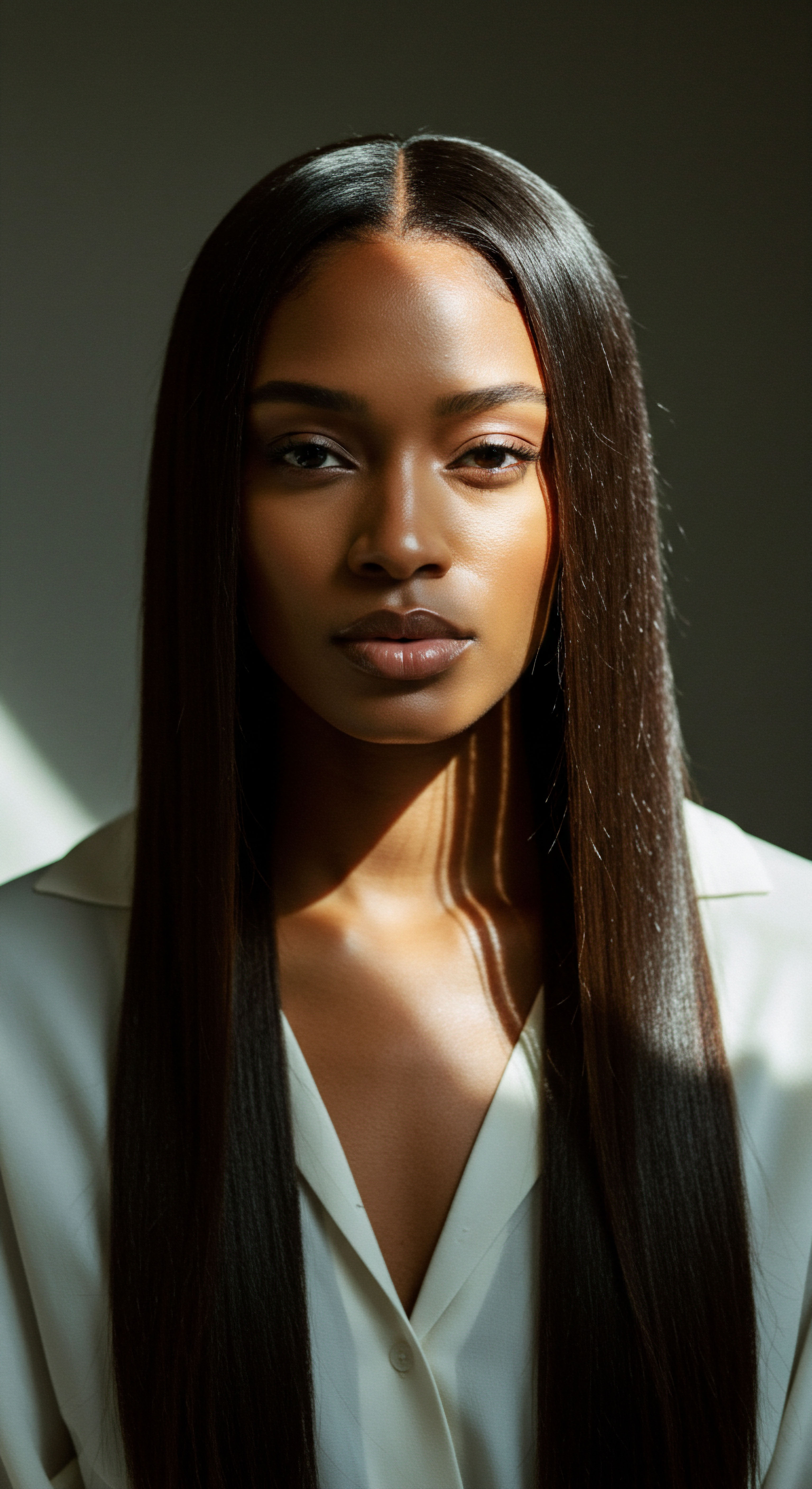
Ritual
With a deeper appreciation for textured hair’s inherent design, we can now turn our attention to the rhythms of daily life, where conscious actions shape the hair’s vitality. Daily habits, when approached with intention and a gentle touch, can transform potential points of stress into moments of nourishment. This is where practical wisdom meets the unique needs of textured hair, moving beyond mere maintenance to a truly supportive relationship with one’s strands. The following explorations delve into routines that minimize friction and promote a serene hair experience.
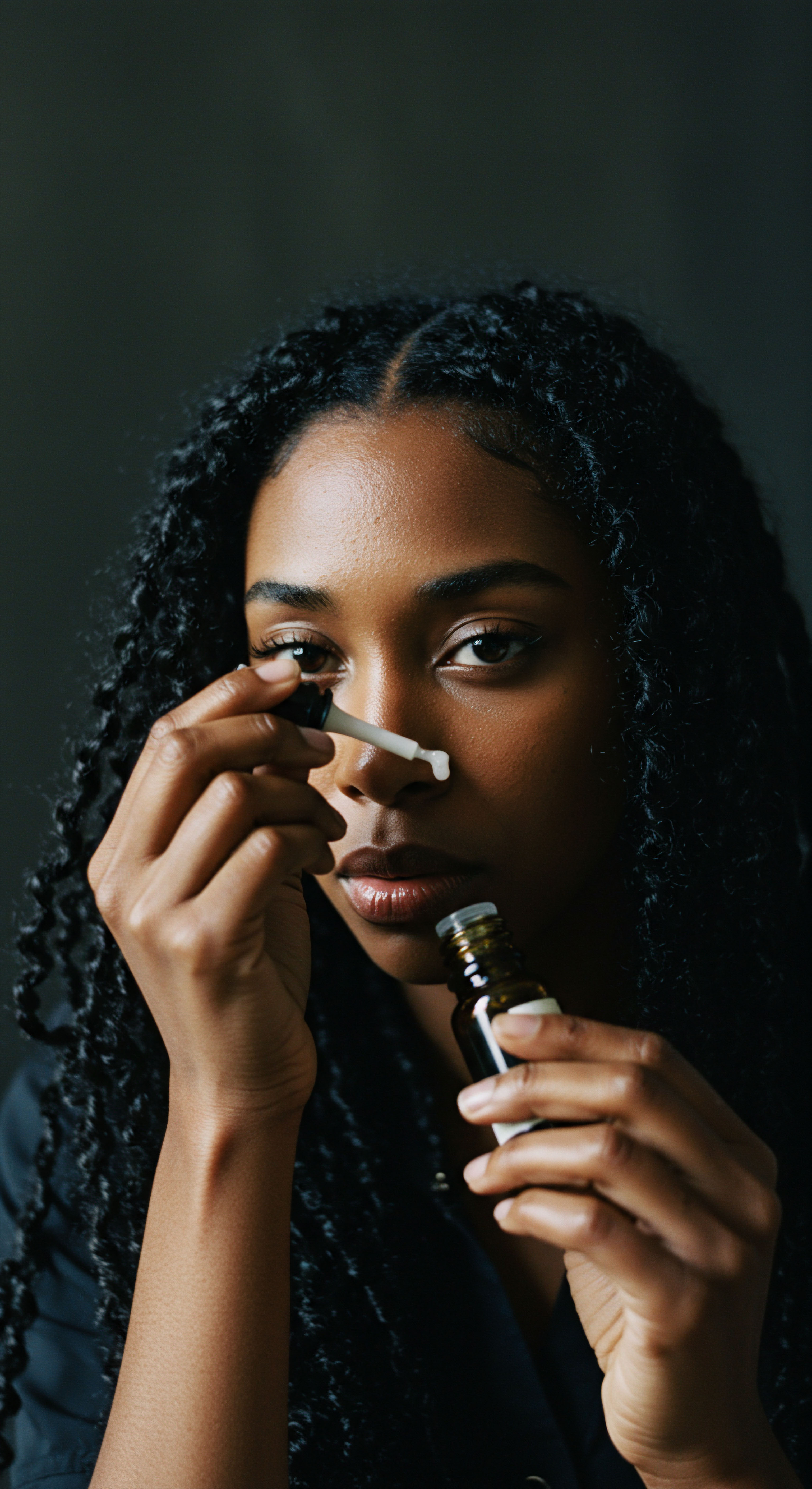
The Gentle Art of Detangling
One of the most frequent interactions with textured hair involves detangling, a process that, if not approached with care, can lead to significant friction and breakage. The coiled nature of textured hair makes it prone to tangling and knotting. Attempting to force a comb or brush through dry, matted hair is a direct invitation to damage. Instead, consider detangling as a meditative practice, best performed on damp hair, generously coated with a slippery conditioner or detangling product.
A study from 1976 noted that wet hair is more susceptible to damage during grooming than dry hair, suggesting that minimal handling and brushing of wet hair could reduce physical damage. However, the same research indicates that using conditioner when handling wet hair can prevent a significant amount of surface damage, as the conditioner helps to seal cuticle scales. This suggests a careful balance ❉ wet hair is vulnerable, yet a proper conditioning agent can create the necessary slip for safe detangling.
- Sectioning ❉ Divide hair into smaller, manageable sections. This prevents overwhelming the strands and allows for focused attention on each part.
- Tools ❉ Opt for wide-tooth combs or specialized detangling brushes with flexible bristles. These tools are designed to glide through tangles rather than ripping through them.
- Direction ❉ Always begin detangling at the ends of the hair, working your way upward toward the roots. This method gently unravels knots without pulling at the scalp or causing undue stress on the hair shaft.
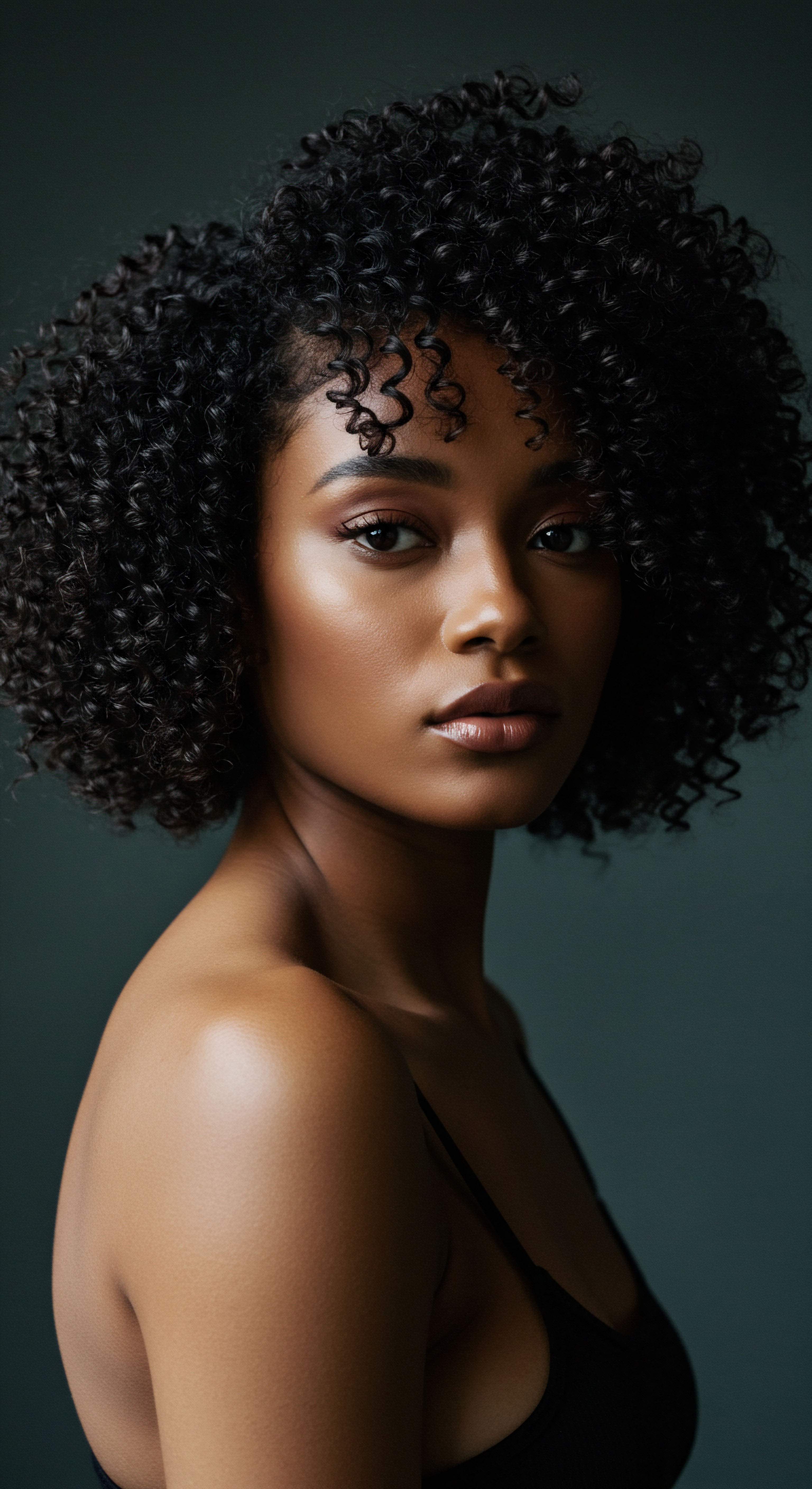
How Does Brushing Frequency Impact Hair Health?
While some might recall the adage of 100 brush strokes a day for healthy hair, for textured hair, this notion can lead to significant friction and damage. An older study examining brushing and hair loss over a four-week period found that hair loss was reduced by brushing less frequently. Vigorous brushing, even once daily, can cause breakage.
For textured hair, which is inherently more prone to tangles and dryness, excessive brushing on dry hair, especially without product, exacerbates friction and can lead to split ends and breakage. A more suitable practice involves gentle detangling with appropriate tools and products, perhaps only once or twice a day, focusing on distributing natural oils rather than aggressive manipulation.
Conscious detangling on damp, conditioned hair with wide-tooth combs or specialized brushes significantly reduces friction, preserving the integrity of textured strands.

Cleansing and Conditioning with Care
The products chosen for cleansing and conditioning play a significant role in minimizing friction. Shampoos that strip the hair of its natural oils can leave it feeling rough and prone to tangling, thereby increasing friction during subsequent styling. Instead, gravitate toward sulfate-free cleansers that offer a gentle yet effective wash.
Conditioners are allies in the fight against friction. Ingredients like glyceryl stearate, a waxy lipid, form a protective barrier around the hair strand, preventing moisture loss and reducing static electricity, which helps flatten cuticle scales and minimizes friction. Silicones, such as dimethicone, also coat the hair cuticle, making it appear smoother and reducing friction between fibers.
However, consideration should be given to potential build-up with water-insoluble silicones. The goal is to select conditioners that provide ample slip, allowing strands to glide past each other, whether wet or dry.

What Cleansing Habits Preserve Hair Moisture?
Regular, gentle cleansing is essential for scalp health, which in turn supports healthy hair growth. However, for textured hair, the frequency of washing often differs from straighter types due to its natural dryness. Over-washing can strip away precious moisture, leading to increased brittleness and susceptibility to friction. Many textured hair routines prioritize co-washing (conditioner-only washing) or alternating between a gentle cleanser and a co-wash to maintain hydration.
When shampooing, focus the product primarily on the scalp, allowing the rinse to cleanse the lengths. Following with a rich, hydrating conditioner, applied generously from mid-shaft to ends, helps to seal the cuticle and provide the necessary lubrication.

Relay
Having explored the fundamental characteristics of textured hair and the intentional rituals of daily care, we now ascend to a broader vista, one where science, cultural practice, and the deeper context of hair wellness converge. This section delves into less obvious yet profoundly impactful habits that serve as silent guardians against friction, extending beyond mere product application to encompass ancestral wisdom and environmental considerations. We seek to understand the interconnectedness of these elements, moving beyond the surface to appreciate the profound relationship between our daily choices and the enduring health of textured hair.

The Nighttime Sanctuary and Sleep Protection
The hours we spend in slumber, often perceived as a time of rest, can be a hidden battleground for textured hair. Tossing and turning against rough pillowcases creates significant friction, leading to tangles, breakage, and moisture loss. This nightly agitation can undermine even the most meticulous daytime care. The solution lies in creating a nighttime sanctuary for your strands.
The practice of covering hair at night, often with bonnets or scarves, is a long-standing tradition in many cultures, particularly within the African diaspora. This practice, far from being a mere aesthetic choice, is a pragmatic approach to hair preservation. Materials like silk and satin are superior to cotton, which can absorb moisture and create friction.
Silk, a natural, protein-based fiber, boasts a smooth surface that allows hair to glide effortlessly, minimizing tangles and knots. It is also less absorbent than cotton, allowing hair to retain its natural oils.
A compelling data point from a 2020 study published in the International Journal of Trichology indicated that individuals using silk pillowcases experienced a significant reduction in hair breakage—up to 90%—compared to those who preferred cotton. This substantial decrease underscores the profound impact of a seemingly small change in nighttime habits. The tribological properties of hair, which study friction and wear, confirm that smoother surfaces, such as silk, drastically reduce the mechanical stress on hair fibers.

Why Does Sleep Surface Choice Alter Hair Integrity?
The integrity of the hair cuticle, its outermost protective layer, is directly impacted by friction. When hair rubs against a coarse surface like cotton, the cuticle scales can lift and become damaged, leading to dullness, frizz, and increased vulnerability to breakage. Silk and satin, with their smooth, tightly woven surfaces, prevent this mechanical disruption. They act as a gentle buffer, allowing the hair to slide rather than snag, thus preserving the cuticle’s alignment and the hair’s natural moisture.
This preservation of moisture is particularly vital for textured hair, which, as discussed, is inherently prone to dryness. By maintaining hydration, these protective coverings reduce the brittleness that makes hair more susceptible to damage from friction.
| Material Cotton |
| Friction Level High |
| Moisture Absorption High |
| Hair Benefits Increases tangles, breakage, dryness |
| Material Silk/Satin |
| Friction Level Low |
| Moisture Absorption Low |
| Hair Benefits Reduces tangles, breakage, retains moisture |
| Material Opting for low-friction, moisture-retaining materials for sleep protection is a cornerstone of textured hair care. |

Protective Styling as a Shield
Beyond nighttime rituals, daily protective styling serves as a continuous shield against environmental friction and over-manipulation. Protective styles, such as braids, twists, or buns, tuck away the delicate ends of the hair, which are the oldest and most fragile parts of the strand. This reduces exposure to external elements like clothing, bags, and even the wind, all of which can contribute to mechanical stress.
Historically, African communities have practiced intricate braiding and styling techniques for millennia, dating back to 3500 BC. These styles were not merely decorative; they held profound cultural significance, signifying age, marital status, wealth, and tribal identity. Crucially, they also served a practical purpose ❉ to protect the hair from environmental damage and promote length retention.
The Himba people of Namibia, for example, have long used pigmented strands to protect themselves from the sun, and various African communities incorporated natural materials and elaborate patterns for hair maintenance. This ancient wisdom speaks to the enduring understanding that low-manipulation styles are key to preserving hair integrity.

What Cultural Practices Inform Hair Protection?
The wisdom of ancestors offers profound guidance for modern textured hair care. Ancient African civilizations celebrated hair as a symbol of identity and spirituality, with intricate hairstyles carrying deep cultural meanings. During the transatlantic slave trade, enslaved Africans used cornrows to create secret messages and maps for escape routes, and these styles also served as a practical means to keep hair manageable under harsh conditions.
The continuity of these practices, from historical uses of oils and butters for moisture to the enduring tradition of braiding, underscores a deep, collective understanding of hair’s vulnerability and the necessity of protection. These traditions remind us that hair care is not solely a cosmetic pursuit, but a practice steeped in heritage, resilience, and a profound respect for the hair’s intrinsic nature.

The Hydration Imperative
Friction is intensified when hair is dry. Therefore, consistent hydration is perhaps the most significant daily habit for minimizing friction. Textured hair’s unique structure makes it naturally drier, as sebum struggles to travel down the coiled shaft. This means external moisture sources are vital.
Applying leave-in conditioners, hair milks, or light oils daily or every other day, depending on the hair’s needs, helps to coat the strands, providing a smooth surface and reducing the likelihood of snagging. The concept of “sealing” moisture involves layering a water-based product with a heavier oil or butter to lock in hydration, a practice deeply rooted in traditional African hair care, where the consistent use of oils and butters was a key to maintaining hair moisture.
The interplay of humidity and hair is a complex one. While humidity can cause hair to swell and frizz by disrupting hydrogen bonds, extreme dryness can also lead to brittleness. A balanced approach to moisture, rather than simply avoiding humidity, is crucial. This means providing ample internal hydration through products, while also protecting the hair from excessive environmental dryness or wetness.
- Water-Based Products ❉ Begin with a spray or cream that lists water as its first ingredient. This delivers essential hydration directly to the hair shaft.
- Light Oils ❉ Follow with a lightweight oil to seal in the moisture. Oils like jojoba or argan, which closely resemble natural sebum, can coat the hair without weighing it down.
- Regular Refreshing ❉ On non-wash days, a quick spritz of a hydrating mist can revive curls and reduce friction, especially if the hair feels parched.
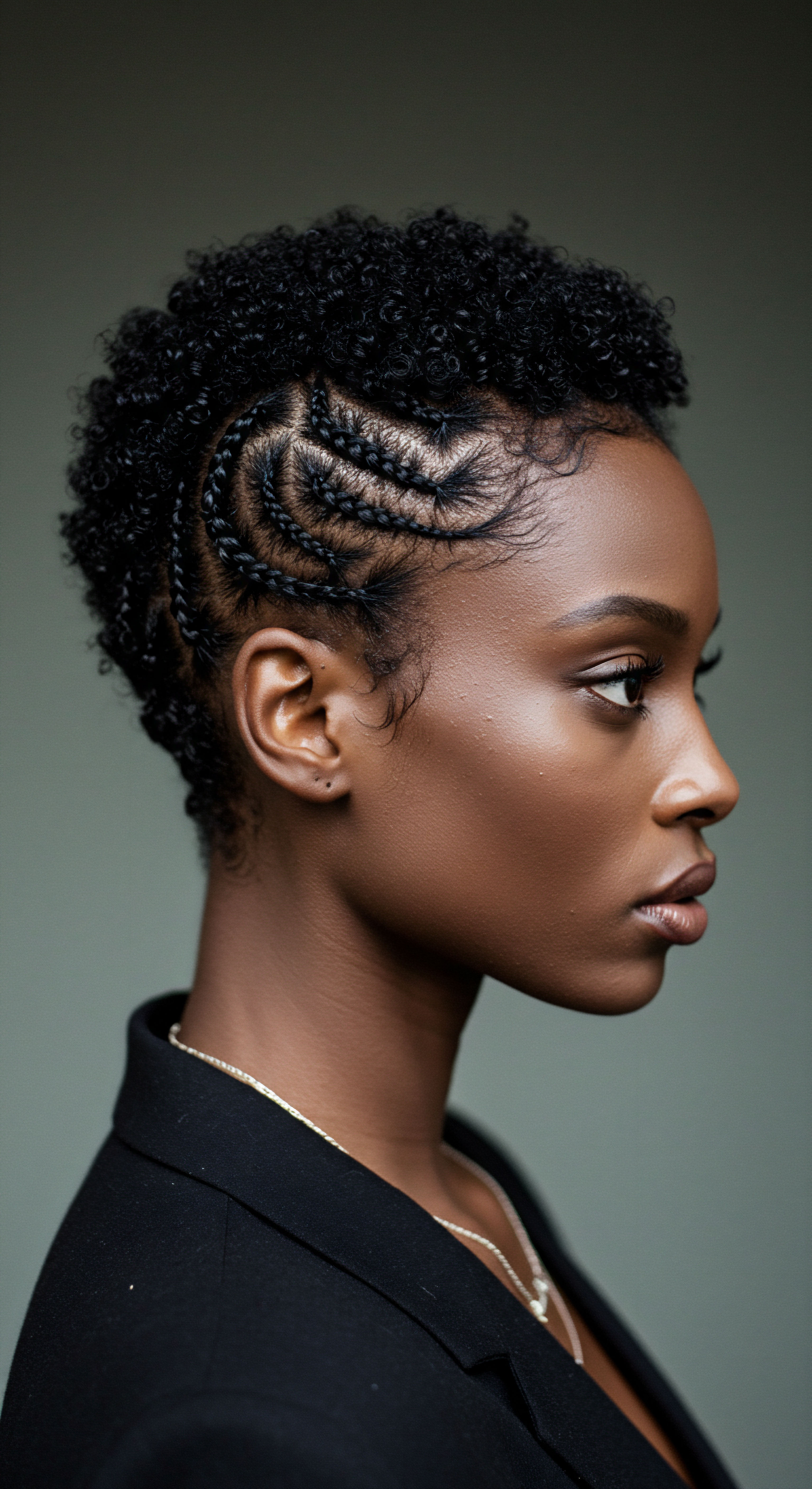
Mindful Manipulation
Every touch, every styling action, carries the potential for friction. Minimizing manipulation is a powerful daily habit. This includes:
- Air Drying When Possible ❉ Excessive heat styling can damage the cuticle, making hair more susceptible to friction. Allowing hair to air dry, or using a diffuser on a low heat setting, can reduce stress.
- Gentle Styling ❉ Avoid tight hairstyles that pull at the roots or create tension along the hair shaft. Opt for looser styles that allow the hair to move freely.
- Awareness of Surfaces ❉ Be mindful of how your hair interacts with surfaces throughout the day. Rough collars, seatbacks, and even certain hats can contribute to friction. Consider using silk scarves or collars to protect hair from these abrasive interactions.

Reflection
The journey toward minimizing friction for textured hair is more than a list of tasks; it is an invitation to a deeper relationship with one’s hair. It asks us to slow down, to observe, and to listen to the subtle signals our strands offer. By understanding the unique biophysical realities of textured hair, honoring the ancestral practices that have preserved its beauty for generations, and embracing a philosophy of gentle, intentional care, we do not merely reduce friction.
We cultivate a space where hair can simply exist, unburdened and free, in its most authentic, radiant form. This mindful approach allows textured hair to flourish, reflecting a quiet strength and serene beauty that is truly its own.

References
- Chemistry of Wellness ❉ Hair and Hair Care. University of Virginia.
- A Regional Walk Through The History of African Hair Braiding. OkayAfrica.
- The Cultural Significance and Representation of Afro-Textured Hair. Umthi.
- The History of Textured Hair. colleen.
- How does friction affect Afro textured hair? Nourished Springs.
- The Science Behind Hair Texture ❉ Unraveling the Mysteries. Myavana.
- The Cultural Significance of Hair. CREAM – Centre for Research and Education in Art and Media.
- Cultural Significance of Hair Through Time. Fabulive.
- Why it’s important to use Protective Hairstyles at Bedtime. Vixen Hair Extensions.
- Silk Pillowcase Benefits for Hair Extensions Users. Digital Library Hub.
- History of the Natural Texture Hair Movement By Diane Da Costa.
- Hair Cuticle ❉ Understanding This Important Part of Your Hair. Function of Beauty Blog.
- What Causes Different Hair Types and Textures? Olaplex.
- The Self-Care of Silk and Satin – Why Nighttime Protection Matters for Your Extensions. Yummy Extensions.
- A Short Interesting History Of Hair Braiding. Afrocenchix.
- The Role of Hair in Shaping Identity. Cécred.
- Ancient African Hair Growth Secrets For Healthy Hair. Sellox Blog.
- Textured Hair Care Through the Decades ❉ The 1940s – War, Work, and Waves.
- Brushing wet hair- is it good or bad? Dreamdogz.
- A History Lesson On Hair Braiding. Odele Beauty.
- The History of Straightening Afro and Textured Hair. Noma Sana.
- The Power of Hair Across Cultures ❉ A Symbol of Identity and Expression.
- The Art of African Braiding ❉ A Historical Deep Dive. Haku Holistics.
- On Hair Care Physicochemistry ❉ From Structure and Degradation to Novel Biobased Conditioning Agents. PubMed Central.
- Hair Care Is a Focus in Africa. Happi.
- The Connection Between Hair and Identity in Black Culture. C+R Research.
- How 100 Strokes Can Boost Hair Health & Scalp Care. Cameo College of Essential Beauty.
- How Damaged is Hair? Part I ❉ Surface Damage. Cosmetics & Toiletries.
- Hair Types ❉ Exploring Hair Textures and Their Characteristics. MedicineNet.
- Can The Type of Brush or Comb I Use Cause Hair Loss?
- Is Wrapping Your Hair at Night Good? Esme Luxury.
- Historical Significance of Black Hairstyles.pptx.
- Is brushing my hair too often harmful for my hair? Quora.
- Brushing Hair ❉ How To, Benefits, Frequency, and More. Healthline.
- Benefits of Sleeping in a Bonnet ❉ Why You Should Do It. Amerisleep.
- Ancient Gems ❉ A Historical Survey of African Beauty Techniques.
- Secret Benefits of Silk for Hair and Skin. The Chic Icon.
- 7 Convincing Reasons to Incorporate Silk Pillowcases Into Your Luxury Bedding Line.
- 10 Protective Sleep Hairstyles For Better Hair. Sitting Pretty Halo Hair Extensions.
- Impact of Environmental Stressors on Hair. NYSCC.
- Do Silk Pillowcases Really Benefit Your Hair and Skin? The Beauty Chef.
- Bamboo vs. Silk Pillowcase ❉ 4 Reasons You Should Pick Bamboo. Hairlust.
- Traditional African Secrets For Long And Healthy Hair. Africa Imports.
- No raw oils and butters vs. Traditional African hair care? Reddit.
- Life before air conditioning ❉ Curly hair kept early humans cool. Penn State University.
- Biophysics of Human Hair. ReadingSample – NET.
- The Effect of Hydration on the Mechanical Behaviour of Hair. ResearchGate.
- The what, why and how of curly hair ❉ a review. PMC.
- Learn the Science of Curly Hair. Paramount Beauty.